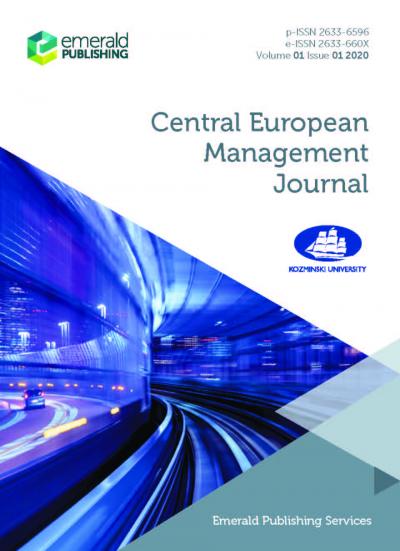Content of Disclosures Concerning Control over Financial Reporting: The Perspective of Polish Listed Companies
Jacek Gad
University of Lodz
2016 24 (3) Central European Management Journal
DOI 10.7206/jmba.ce.2450-7814.174







